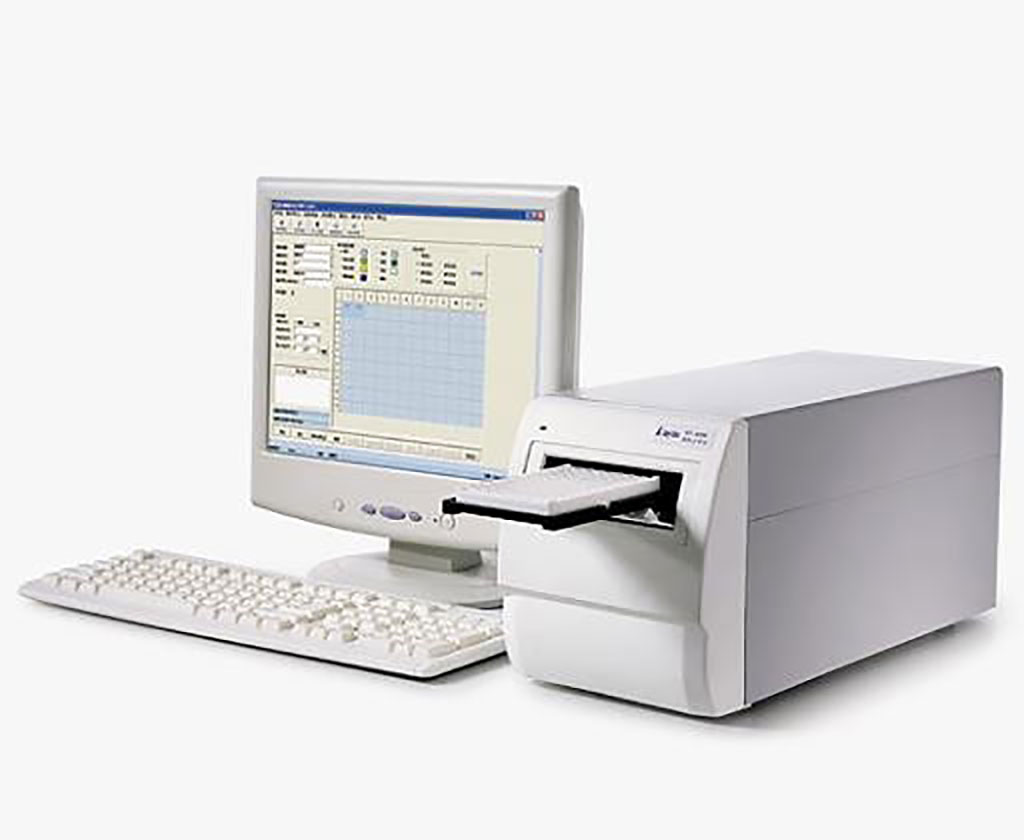Urinary Heat Shock Protein 70 Evaluated in Chronic Prostatitis
By LabMedica International staff writers
Posted on 21 Apr 2021
Chronic prostatitis (CP) is a common, but a confusing urological disease that seriously affects men's lives and health and cannot be ignored. The incidence rate is increasing, and the disease is affecting younger men and long‐term prostatitis affects male sexual function.Posted on 21 Apr 2021
The etiology and pathogenesis of CP are very complicated. Studies have shown that the detection of heat shock protein 70 (HSP70) levels in the expressed prostatic secretions (EPS) of CP patients suggests that it is involved in the process of inflammation. However, EPS can be obtained by anal prostate massage, which is noticeably painful, invasive, and intolerable for some patients.

Image: The Rayto RT‐6500 microplate reader (Photo courtesy of Rayto Life and Analytical Sciences)
Clinical Laboratory Scientists at the Guangxi Medical University (Nanning, China) explored the diagnostic value of the levels of prostatic exosomal protein (PSEP) and heat shock protein 70 (HSP70) in the urine of patients with chronic prostatitis (CP). Urine samples from 210 CP patients (70 cases of the USA National Institutes of Health Category II [NIH‐II], 70 NIH‐IIIa, and 70 NIH‐IIIb patients) and 70 control subjects were collected between May 2018 and February 2020.
The team used enzyme‐linked immunosorbent assay (ELISA) to detect PSEP and HSP70 in the urine samples. The PSEP kit was provided by Angke Biotechnology Co., Ltd., (Taicang, China) and the HSP70 kit was provided by Shanghai Enzyme Link Biotechnology Co., Ltd (Shanghai City; China). The investigators read and recorded the absorbance value of the Rayto RT‐6500 microplate reader (Rayto Life and Analytical Sciences Co., Shenzhen, China), in dual‐wavelength mode (450 nm is the test wavelength; 630 nm is the reference wavelength). The differences in urine PSEP and HSP70 levels between the groups were analyzed, and receiver operating characteristic (ROC) curves were used to analyze the clinical value of PSEP and HSP70 in the diagnosis of CP.
The investigators reported that the PSEP levels of CP patients were significantly higher than those of the control group, but there was no difference in PSEP levels among CP subgroups. The level of HSP70 in the urine of the NIH‐II patients was significantly lower than the levels in the NIH‐IIIa and NIH‐IIIb subgroups and the control group, but there was no difference in HSP70 levels between the NIH‐IIIa and NIH‐IIIb subgroups and the control group. ROC curve analysis results showed that the area under the curve (AUC) of PSEP for the NIH‐II, NIH‐IIIa, and NIH‐IIIb patients was 0.751, 0.776, and 0.731, respectively. The AUC of HSP70 in NIH‐II patients was 0.784, and the AUC of combined detection of PSEP and HSP70 in NIH‐II patients was 0.858.
The authors concluded that urinary PSEP can be used as a marker for the diagnosis of CP, but it cannot distinguish the CP subtypes, and HSP70 can be used as a diagnostic index for NIH‐II classification. Both provide a novel, simple, non‐invasive, and painless molecular detection method for CP diagnosis. The study was published on April 6, 2021 in the Journal of Clinical Laboratory Analysis.
Related Links:
Guangxi Medical University
Angke Biotechnology Co., Ltd
Shanghai Enzyme Link Biotechnology
Rayto Life and Analytical Sciences




 assay.jpg)









